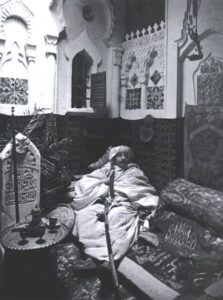Selling Condos and Jets and Picassos

Selling luxury condominiums and townhouses at Rancho Santana was slowing down because prices were going up. A luxury three-bedroom, three-bath condo that sold for $350,000 10 years ago is selling for more than twice that today. There are still some buyers out there willing to pay $700,000+ for luxury condos, so we may build another group of them next year. But the hot market is for units that cost considerably less.
We realized this about six months ago. And after some research and discussion, decided to sell our three/three units at the price the market wanted. We did it by turning them into three-month timeshares at $250,000.
Of course, you can’t call them timeshares these days. That old phrase has a slightly tarnished reputation. Instead, we’re using the current nomenclature: fractional ownership.
Fractional ownership is a sales strategy that is also being used for expensive assets like boats and planes. And six years ago, I noticed that a company called Masterworks was selling fractional ownerships in a market I would have never imagined: museum-quality art. So, you can’t afford a $10 million Andy Warhol or a $20 million Matisse? No problem. Masterworks will sell you a piece of one of them for 10% or even 5% of the estimated value.
I thought the idea was clever. And I was tempted to try it. But since fractional ownership of art was a new industry, I decided to resist the temptation. To wait and see.
Meanwhile, other fractional ownership companies have entered the fine art market. One that sent me a promotion last week – Freeport – offered shares of works by some artists I love, including a Matisse.
After five years of following this corner of the fine art market, I am pretty sure it is legitimate. (I haven’t heard or seen anything to the contrary.) And since these companies buy mostly pieces by well-established masters, the outlook for future appreciation on one’s shares is very good. (The market for fine art is very much like the market for any collectible. The rarer the piece is, the more valuable it is. Investors that focus on the top tranches do better than those that buy secondary pieces, even if they are done by top masters.) And, in fact, Masterworks’ five-year published track record has been impressive.
So, once again, I find myself tempted. But I went to bed last night wondering why I’m still hesitant. When I awoke this morning, I realized why.
If I invest in one of these works of art – something I would really, really like to own – it would become a de facto line on an impersonal balance sheet, rather than a cherished piece I could look at every day.
In fact, it’s quite possible that after I bought a share of the piece I loved, I’d never see it again. It would likely be stored in some anonymous vault leased by Masterworks or Freeport. Or, worse, end up hanging on a wall of one of their company managers!
Hmm. I have an idea. The way Masterworks and Freeport work is by fractionalizing the ownership of a fine art piece into hundreds of shares. But it might be possible to do the same thing on a smaller scale, like we’re doing with the Rancho Santana timeshares. You organize a limited partnership to buy a million-dollar painting for $80,000 per share… and all of the members get to enjoy it personally for, maybe, one month a year.
What do you think?
Click here to find out more about buying art on a fractional basis.
And click here to see a pitch by our Sales VP on why you should buy a timeshare at Ranch0 Santana.



